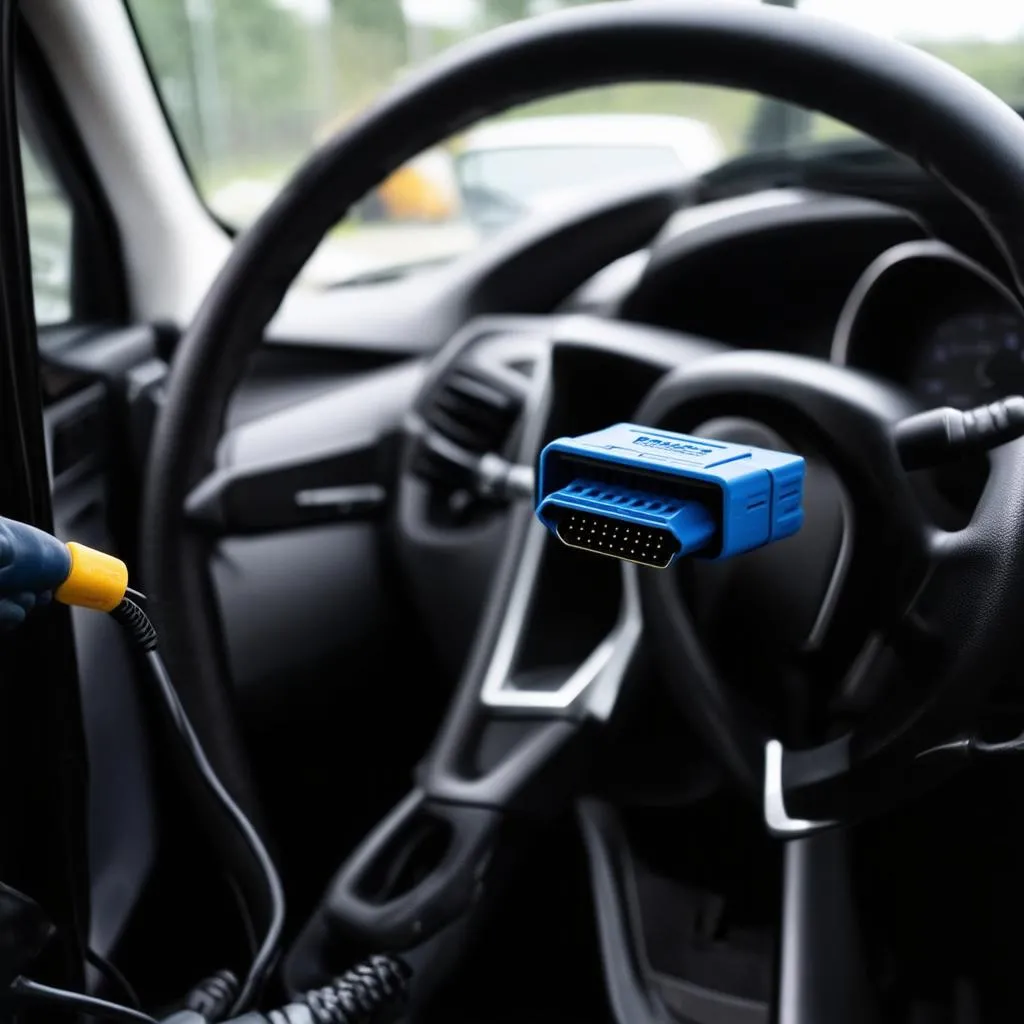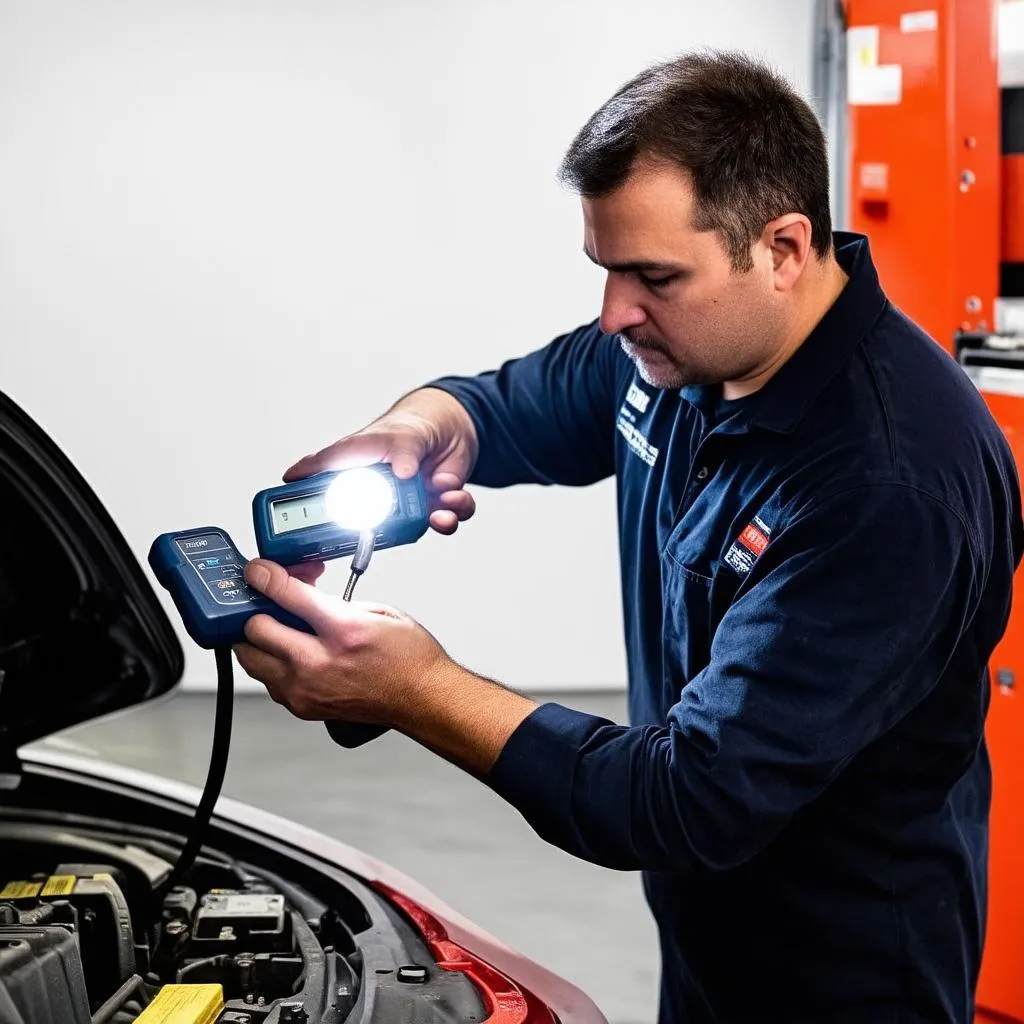Imagine this: You’re driving down a scenic California highway in your Ford Mustang, windows down, wind in your hair, when suddenly – bam! The dreaded check engine light pops on. Frustration sets in. You pull over, whip out your trusty OBD2 scanner, and connect it to the port. But wait, something’s off. The scanner isn’t connecting. Did your OBD port suddenly stop working? Is there a way to “reset” it?
You’re not alone. The question of “How To Reset Obd Port” pops up quite frequently in automotive forums and Google searches. But here’s the catch: the concept of “resetting” an OBD port is a bit of a misnomer. Let’s delve deeper and understand why.
Demystifying the OBD Port: What Does “Resetting” Even Mean?
The OBD Port: Your Car’s Communication Hub
Think of the OBD port (On-Board Diagnostics) as your car’s very own communication portal. It’s a standardized 16-pin connector, usually located under the driver’s side dashboard, that allows external devices like scanners to communicate with your vehicle’s computer (ECU).
When your car experiences a malfunction, the ECU logs a Diagnostic Trouble Code (DTC). Mechanics and car enthusiasts like you and me use OBD2 scanners to read these DTCs, providing valuable insights into the issue.
Can You “Reset” It?
Here’s where things get interesting. Technically, you cannot “reset” an OBD port like you would your smartphone. The port itself doesn’t store any information or have a reset button. When people talk about “resetting,” they’re usually referring to one of two things:
- Clearing DTCs: This involves using an OBD2 scanner to erase the stored error codes from the ECU’s memory. Think of it as hitting the “clear” button on a calculator. However, this doesn’t magically fix the underlying problem. If the issue persists, the check engine light will reappear.
- Power Cycling the ECU: This involves disconnecting the car’s battery for a short period, effectively rebooting the ECU. This can sometimes resolve temporary glitches, similar to restarting your computer.
Why the Confusion?
The confusion likely stems from the fact that some car models have specific reset procedures for certain systems that involve the OBD port. For instance, resetting the TPMS (Tire Pressure Monitoring System) in some Toyota Camry models might require grounding specific pins within the OBD port.
Common OBD Port Concerns and Solutions
While you can’t technically “reset” the OBD port, here are some common issues you might encounter and how to address them:
- Scanner Not Connecting: This is often due to a blown fuse, a faulty OBD2 scanner, or a damaged port itself. Check the fuse box, try a different scanner, and inspect the port for any bent or broken pins.
- Communication Errors: These can occur if the scanner is incompatible with your car’s make and model or if there’s an issue with the vehicle’s CAN bus system. Ensure you’re using a compatible scanner and consult a qualified mechanic if the issue persists.
 OBD2 Scanner Connecting
OBD2 Scanner Connecting
Exploring Related Queries: Your OBD Port Questions Answered
We understand that dealing with OBD ports and car diagnostics can be confusing. To help you out, we’ve compiled answers to some frequently asked questions:
Can a dead car battery affect the OBD port?
While a dead battery itself doesn’t directly damage the OBD port, the process of jump-starting a car can sometimes cause voltage spikes that might blow the fuse connected to the OBD port.
What happens if you short the OBD port?
Shorting the OBD port by connecting incorrect pins can potentially damage the ECU or other electronic components within your vehicle. Always exercise caution and refer to your car’s service manual or consult a professional.
Does the OBD port need power?
Yes, the OBD port receives power from the car’s battery. This is why some diagnostic procedures require the ignition to be turned on or the engine to be running.
 Mechanic Inspecting OBD Port
Mechanic Inspecting OBD Port
Seeking Expert Assistance
Navigating the world of car diagnostics and OBD ports can feel like venturing into uncharted territory. If you’re ever unsure about a diagnostic procedure or encounter persistent issues with your OBD port, don’t hesitate to reach out to our team of expert automotive technicians. We’re available 24/7 to provide guidance, troubleshooting tips, and even assist with software installation for your diagnostic tools.
Contact us on WhatsApp at +84767531508 and let us help you get your car back in tip-top shape!
Keep Exploring Tech Car USA
This article merely scratches the surface of the vast world of OBD ports and automotive diagnostics. If you’re keen on expanding your knowledge, we invite you to explore our other informative articles:
- Can I Reset My TPMS Sensors With OBD Port?
- 2004 RAV4 OBD Port: DLC3, VSC, Trac Reset
- Audi A6 OBD Port Location
We believe that empowering car owners with knowledge is the key to a smoother, more enjoyable driving experience. So, keep those engines revving and stay tuned for more insightful content from Tech Car USA!